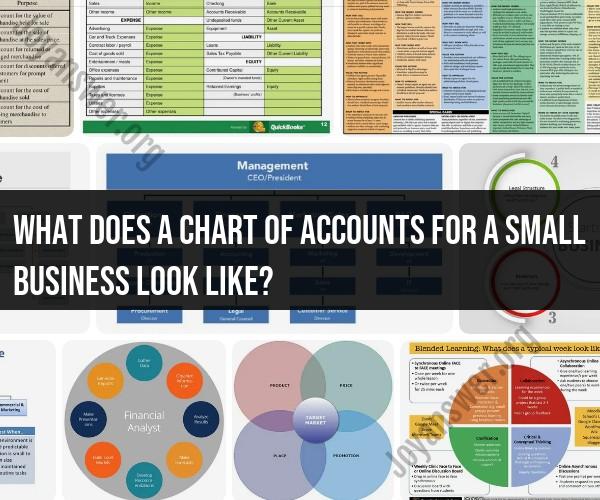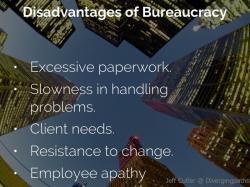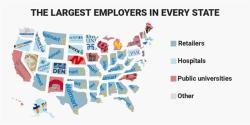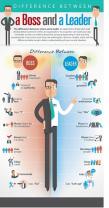What does a chart of accounts for a small business look like?
A chart of accounts for a small business is a structured list of all the financial accounts used to track the company's transactions and organize its financial information. While the specific accounts and numbering system may vary depending on the nature of the business and its accounting needs, here is a sample chart of accounts for a small business:
Asset Accounts:
- 101 - Cash: Includes all cash on hand and in bank accounts.
- 102 - Accounts Receivable: Tracks money owed to the company by customers.
- 103 - Inventory: Records the value of goods held for sale.
- 104 - Prepaid Expenses: Includes expenses paid in advance, such as insurance or rent.
- 105 - Land and Buildings: Lists the value of owned property and buildings.
- 106 - Equipment and Vehicles: Tracks the value of machinery, vehicles, and equipment.
- 107 - Accumulated Depreciation: Depreciation expense accumulated over time.
Liability Accounts:8. 201 - Accounts Payable: Records amounts owed to suppliers and vendors.
- 202 - Short-Term Loans: Tracks loans with repayment due within a year.
- 203 - Long-Term Loans: Lists loans with repayment due beyond a year.
- 204 - Accrued Liabilities: Includes expenses incurred but not yet paid.
- 205 - Credit Card Debt: Tracks outstanding credit card balances.
Equity Accounts:13. 301 - Owner's Capital: Shows the owner's investment in the business.
- 302 - Owner's Drawings: Records withdrawals made by the owner.
- 303 - Retained Earnings: Accumulated profits not distributed to the owner.
Income Accounts:16. 401 - Sales Revenue: Records income from sales of products or services.
- 402 - Interest Income: Tracks interest earned on savings or investments.
- 403 - Other Income: Includes non-sales revenue, such as rent income.
Cost of Goods Sold (COGS) Accounts:19. 501 - Cost of Goods Sold (COGS): Records the direct costs associated with producing goods or services sold.
Expense Accounts:20. 601 - Rent Expense: Lists rent payments for business premises.
- 602 - Utilities Expense: Tracks utility payments, such as electricity and water.
- 603 - Salaries and Wages: Records payments to employees.
- 604 - Office Supplies Expense: Includes expenses for office supplies.
- 605 - Advertising and Marketing: Tracks marketing and advertising expenses.
- 606 - Insurance Expense: Lists insurance premiums paid.
- 607 - Repairs and Maintenance: Records costs for equipment and property maintenance.
- 608 - Depreciation Expense: Depreciation expense for assets.
- 609 - Taxes and Licenses: Includes business taxes and licenses.
- 610 - Interest Expense: Records interest paid on loans.
Other Expense Accounts:30. 701 - Bad Debt Expense: Includes allowances for uncollectible accounts.
- 702 - Donations: Tracks charitable contributions.
- 703 - Professional Fees: Lists fees paid to professionals, such as lawyers or accountants.
This is a simplified chart of accounts, and small businesses can customize it based on their specific needs. Each account typically has a unique account number for easy reference. Additionally, small businesses may choose to create sub-accounts or further categorize expenses within these general account categories to provide more detailed financial information.
Consulting with an accountant or financial professional can help small businesses tailor their chart of accounts to accurately reflect their financial transactions and reporting requirements.













